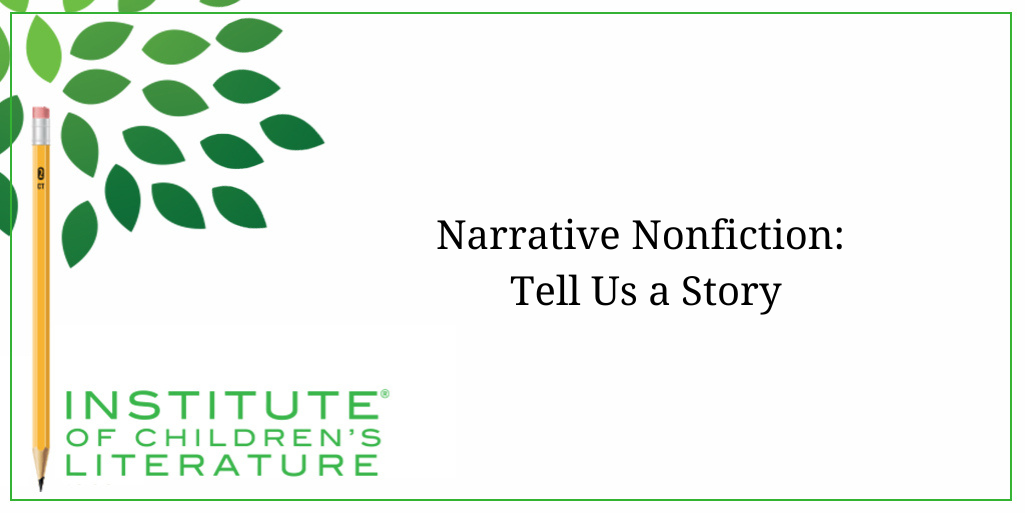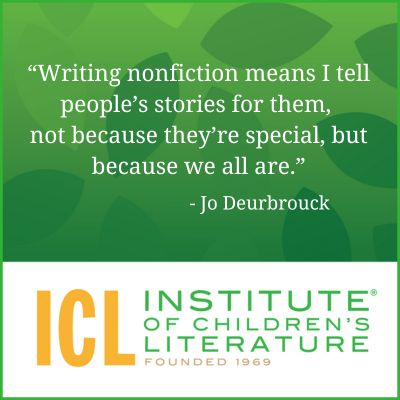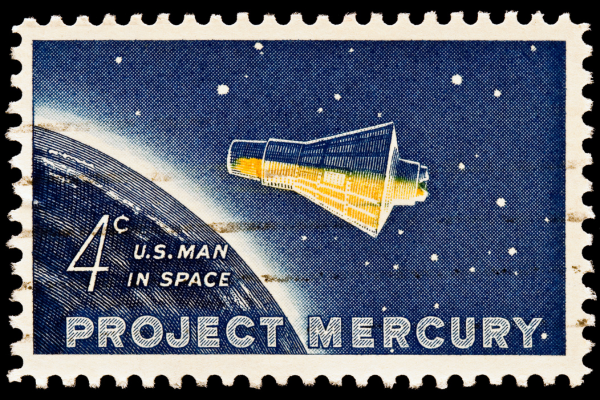
5 Ways Writers Can Prep for 2025 Goal Setting
Before we roll on to the new writing year, let’s harness our optimism for the blank slate before us and prepare for our 2025 Goal Setting just for writers.

Nonfiction encompasses far more material than most people think, and all of it is quite popular, both in educational publishing and in commercial publishing. Melissa Stewart, nonfiction author extraordinaire, lists five categories of nonfiction: traditional, active, browseable, expository literature, and narrative.

Active nonfiction is designed to get the child involved in some sort of hands-on learning. Cookbooks are active, but so are craft books, books of experiments, and game books.
Browseable nonfiction includes all the highly illustrated books which don’t have to be consumed in any kind of order. Readers can flip to any page and learn something about the things pictured.
Expository literature is similar to traditional nonfiction but has a narrow focus, strong voice, and engaging language. Expository literature won’t skim across the surface of a topic, trying to touch on everything, but will instead drill into a specific focus within the subject.
And finally, narrative nonfiction tells a true story from history (or current events) or focuses on a single true experience in someone’s life. Many picture book biographies fall under this category as they expand upon a specific event in the life of the subject (or perhaps a few thematically connected events). Though it is purely nonfiction (with no made-up bits), it is a hybrid of fiction and nonfiction in terms of technique, as it uses techniques from fiction (plot structures, scenes, dialogue, engaging language, etc.) to tell a compelling story.
Because narrative nonfiction doesn’t use made-up elements, writers must research deeply to find the kind of details that flesh out a narrative storyline. For example, newspaper articles from that time can sometimes offer accounts directly from the people involved. Personal letters can sometimes include snippets of conversation. Journals can also offer more opportunities to glean the kind of details that allow an author to reconstruct a scene or conversation accurately. The more you know your subject, the better you will be armed with the information you need to build a narrative.

With the research demands of narrative nonfiction, it’s always wise to choose a subject with which you are deeply engaged because you’re going to spend a lot of time with this subject. When researching, keep careful notes about where you got each bit of information. As you go through the publishing process, you may need this kind of information at your fingertips if a fact or viewpoint is questioned.
If you’re writing a narrative nonfiction picture book, some of the research that doesn’t go into the main text may be used to craft author notes. Keep in mind that the published bibliography included in most picture books only hits the highlights of the research. Your actual bibliography of everything you read would be much longer.
Narrative refers to the story aspects of the piece. The best narrative nonfiction includes at least a few well-fleshed-out characters (with true details gleaned from research), narrative scenes, and some kind of story arc. By story arc, I mean that the story begins in an engaging way and carries the reader forward (often chronologically) with energy built from growing tension that will resolve at the end. For instance, a narrative tale in a biography might introduce the person’s dreams and goals, take us through the challenges and frustrations of trying to reach them, and end when the subject fulfills an important goal. That would be a narrative arc.
Because of the demands of accuracy for a narrative nonfiction story, it will not read exactly like fiction. No amount of research will give you the ease of storytelling that comes with making it all up. Some things will have to be told, not shown, to remain accurate, but a strong narrative nonfiction piece uses vivid language and voice to keep the reader connected to the story as you progress.
This isn’t the time to try to emulate a professorial or scholarly voice. Instead, you want to tell the story in your casual voice, the one you’d use to tell a cool story to a good friend or a child you know. You don’t need to be overly chipper or try to cajole the reader into caring about this story. Instead, trust that if you are fascinated by this tale, and if you tell it well, the reader will be fascinated as well.
Let’s look at Above the Rim, How Elgin Baylor Changed Basketball by Jen Bryant. The story begins with a specific moment in time that shows us something about Elgin Baylor’s childhood:

This opening sets a scene . While it gives us some information directly (thus, telling), it does so in a way that is engaging and interesting. Notice how this opening uses clear, direct language with the author’s voice coming through in the choices made such as describing the summer day as steamy and listing the sorts of things people might do if they have access to these nice parks that were closed to the children in her opening scene.
The author uses the contrast between what is available to the children in the opening scene and the “whites-only” parks to pull us emotionally into the story. She goes on to show more of this push-pull of a situation that isn’t fair in the next section when she shows that this situation is not one that everyone accepts:
Sometimes, late at night, when the city was asleep, the older boys tunneled under the padlocked fences and played there anyway.
Notice here that the author made no attempt to make this a short sentence. She’s pulling on the voice she wants for the story and using a variety of sentence lengths to keep the pace and read-aloud sound of the book interesting and engaging.
On the page, this second section is broken up like poetry, thus making it easier to read, but also allowing each bit of this sentence to settle into the mind of the reader. The event happens late at night. The city is asleep at the time. The older boys tunneled under. The fences were padlocked. The boys played because they found a way. Thematically, an important aspect of the book is set early. This book is about finding a way, and specifically about Elgin Baylor’s own unique way.
Later in the book, the voice of the piece again pulls on poetic devices in both word choice, comparison, and how the text is broken up on the page to help the reader see this young player when he finally has access to basketball and demonstrates a style of play that was brand new and visually stunning:
In one smooth move,
like a plane taking off,
he would leap…
higher and higher
and higher-
as if pulled by some
invisible wire,
and just when it seemed he’d have to come down,
no!
Narrative nonfiction works for more than just biography. It can be used to tell the story of an event or an invention that needed many people. For example, How We Got to the Moon by John Rocco is an illustrated nonfiction book that walks the reader through the events that led to the first man to walk on the Moon. Because this is going to be the story of a complex event, the author begins with a kind of overview of the goal, then steps back to take us there:
“It’s not a miracle. We just decided to go.”
–Jim Lovell, astronaut
Between 1968 and 1972, we sent men in giant rocket ships to go to and explore the Moon. This project was called Apollo. For the first time in humankind’s history, we left our planet and traveled to another celestial body. This effort is considered one of the greatest technological achievements of the human race. We didn’t have cell phones, microcomputers, or the internet. What we did have was a goal: to put a man on the Moon and bring him back safely.

In the text itself, the author doesn’t hold back on the use of challenging words a young person may not be conversant with, such as “celestial body.” Because this book covers a lot of ground, it does a lot of telling, so the use of frequent sidebars and illustrations help to engage the reader, but so does the way the author digs into the motivations of the people involved. For example, look at this quote from the section about the first rockets that could leave the earth’s atmosphere and the United States’ actions to secure that kind of technology. Notice how the author shows the conflict between the motivations of the scientists and the military. Conflict is one literary device to make narrative nonfiction more engaging and this section offered the perfect opportunity to use it:
In a mission called Operation Paperclip, the United States managed to secure Wernher von Braun, the mastermind behind the V-2, along with over a hundred other German scientists. They were brought back to the United States to advance rocket technologies for the military. Von Braun again pushed for the rockets to be used for space exploration, but just as in Germany, military leaders were not interested. He and the rest of the scientists were eventually stationed in the small town of Huntsville, Alabama, where they continued to build weapons for the military, waiting for their chance to create rockets that would carry humans into space.
Now, finally, let’s look at a selection from a sidebar further in the book about the first American sent into space, Alan Shepard. Notice how the author uses engaging language and details of particular interest to younger readers:
At 5:15 a.m. on May 5, 1961, Shepard crammed himself into the tiny Mercury capsule he had named Freedom 7. Cloud cover and technical difficulties kept delaying the flight as Shepard waited, lying on his back, for over three hours. And then another problem arose: Shepard had to pee. The launch crew was not expecting this. The whole flight was supposed to last only 20 minutes, so they hadn’t equipped the capsule with a urine collection device. To pull Shepard out of the capsule so he could go to the bathroom would delay the launch even further. They finally all agreed that he should just go in his spacesuit.
Even a small voice detail such as choosing “crammed himself” instead of “climbed inside” can make a big difference. So writers of narrative nonfiction choose carefully to pick an option that is both accurate and evocative.
One of the best things you can do to prepare yourself to write truly amazing narrative nonfiction is to read it. Reading lists for excellent children’s nonfiction abound and narrative nonfiction often finds a place, especially among the award winners. The combination of engaging text, accuracy, and unique focus often makes narrative nonfiction win awards. Checking out award lists, such as the Orbis Pictus Award for excellence in the writing of nonfiction for children, can help you build a solid reading list.
If you don’t have time to read every book on the lists you find cover to cover, you can usually use the Amazon “Look Inside” feature to check out how the author begins each book at the very least. And you’ll get a solid sample of the author’s voice. This alone would be a huge help as you can see the options available to you as a writer of your own book. One thing reading these books will show you is: narrative nonfiction is every bit as creative, engaging, and popular as fiction.
So maybe there’s a place for you in this exciting nonfiction form. What do you think?
With over 100 books in publication, Jan Fields writes both chapter books for children and mystery novels for adults. She’s also known for a variety of experiences teaching writing, from one session SCBWI events to lengthier Highlights Foundation workshops to these blog posts for the Institute of Children’s Literature. As a former ICL instructor, Jan enjoys equipping writers for success in whatever way she can.

Before we roll on to the new writing year, let’s harness our optimism for the blank slate before us and prepare for our 2025 Goal Setting just for writers.

Writers can be thin-skinned when it comes to getting feedback on their work. Let’s look at 4 ways to positively deal with constructive criticism!

Rejection is part of the territory when it comes to being a writer. Today we offer reflection for writers to help redirect your efforts after a rejection.
1000 N. West Street #1200, Wilmington, DE 19801
© 2024 Direct Learning Systems, Inc. All rights reserved.
1000 N. West Street #1200, Wilmington, DE 19801
© 2024 Direct Learning Systems, Inc. All rights reserved.
1000 N. West Street #1200, Wilmington, DE 19801
© 2024 Direct Learning Systems, Inc. All rights reserved.
1000 N. West Street #1200, Wilmington, DE 19801
© 2025 Direct Learning Systems, Inc. All rights reserved.
1000 N. West Street #1200, Wilmington, DE 19801
©2025 Direct Learning Systems, Inc. All rights reserved. Privacy Policy.
3 Comments